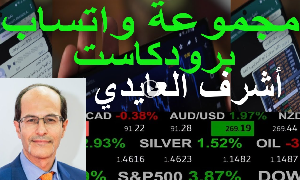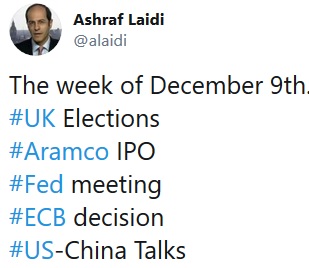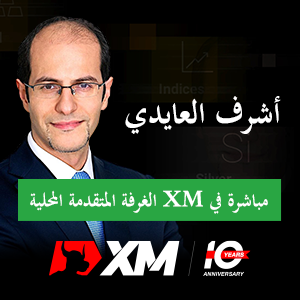Yield Curve to Bring Back the Fed
US yield curve chatter should return soon. Both popular measures of the US yield curve (10 year yield minus 2 year yields and 5y-3y) are nearest their zero level in over a month. As US diffusion indices revert above the 50 level and stabilizing US-China rhetoric helps push Fed cut expectations to the 2nd half of 2020, this is the time to watch the yield curve. Why?

First, the reason the yield curve steepened (re-entered positive territory) from late August til now is the three rate cuts from the Fed -- Fed Funds rate graph (yellow) shows atop both yield curves measures.
As Fed pauses from easing, short-term yields begin to edge higher, while longer-term yields run out of steam (on renewed macro doubts) to the extent that the gap between long and short term rates shrinks gradually back towards zero. See the latest graphs of the 10-year yield and oil in today's IMT.
The rest of the chart suggests diminishing Fed easing stimulus combined with continued lack of tangible progress on the US-China trade front (if China has not agreed to any deal over the past 18 months, it will not do so anytime soon), surging uncertainty from the impeachment hearings and inevitable signs of tensions within Republicans towards their president, will all bring back Fed easing expectations as early as February-March 2020. The Fed may have succeeded in diverting attention away from rate cuts, but it will not stop a renewed return of yield curve inversion (or flattening) from market's attention.
For traders of SPY, SPX, DOW and other major indices attempt a retest of the recent highs after a rare 2-day decline. Yet the overlay between indices and that mysterious ratio remains in play.








